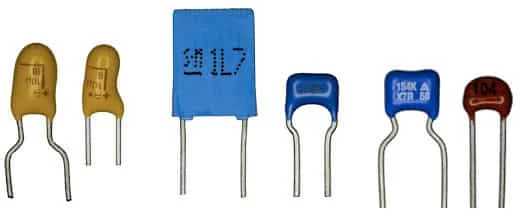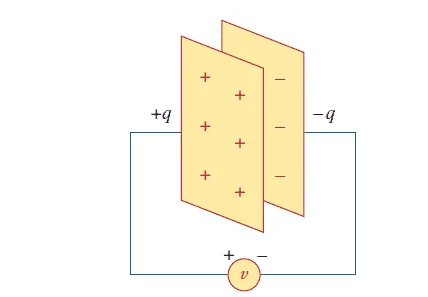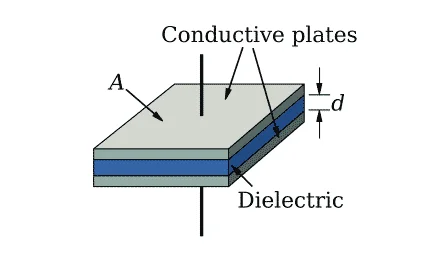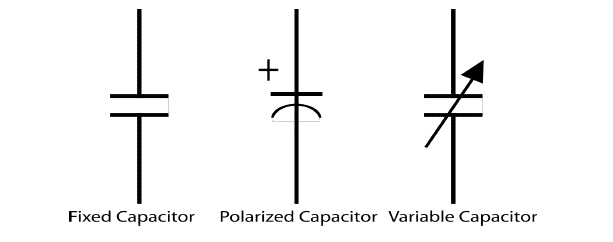The device that offers pure capacitance is known as a capacitor. A capacitor is a two-terminal energy storage device, that stores energy in its electric field. It can be found in turning and filtering circuits.
It consists of two metallic plates facing each other and separated by a dielectric medium such as air, ceramic, mica or paper. These plates can carry electric charges in them.

By having two plates very close to each other and separated by a dielectric medium, it is possible to collect large amount of charge on the plates. When a voltage is applied across the plates, the source forces positive charge on one plate and negative charge on the other plate. The charges see the opposite charge on the opposite plate and are attracted to it rather than being opposed by the like charges on the same plate.

Definition of capacitance
Capacitance can be defined as the property of a capacitor that allows a capacitor to store charges on its conducting plates. It depends on the physical dimensions of plates and the permeability of the dielectric separating them.


The capacitance of a capacitor varies as below:
- Larger the area of the plates, higher will be the capacitance.
- Higher the distance of separation between the plates, lesser will be the capacitance.
- Higher the permeability of the separating medium, greater will be the capacitance.
The amount of charge q stored in a capacitor when a voltage V is applied to the capacitor terminals is given by
Q = CV
Where C is the capacitance of the capacitor and it is the ratio of charge in one plate of the capacitor to the voltage applied between the plates.
Unit of capacitance
The unit of capacitance is farad (F). One farad can be defined as the measure of the capacitance of a capacitor that can store one coulomb of charge on its plates when a potential difference of one volt is applied across it. The unit of the capacitor was named to honour Michel Faraday, for his discovery of electromagnetic induction based on which motors and generators work.
Voltage-current relationship in a capacitor
As we know the current is the flow of electrons. Differentiating the above equation (Q = CV) with respect to time t,
dQ/dt = C . dV/dt
dQ/dt is the rate of change of charges, which is nothing but current. Hence,
Current i = C . dV/dt
Hence current flow to the capacitor is proportional to the rate of change of voltage across the capacitor terminals and the capacitor prevents this voltage from changing rapidly. But the current can flow instantly. This is why the pre-charging resistor is used before the capacitor. An ideal capacitor does not dissipate energy but stores it and delivers it fully to the circuit.
Various types of capacitors are available in the commercial market. The most basic categories of which are a Fixed capacitor, polarized capacitor and a variable capacitor. The terminals of a fixed capacitor are interchangeable. Polarized capacitors have their anode and cathode predefined. If interchanged, they can result in an explosion.

A capacitor acts as an open switch in a dc circuit. When a DC voltage is applied across the capacitor, charges build up on both plates for a short period of time. After the built up of charges no current flows through it and it acts as an open switch.